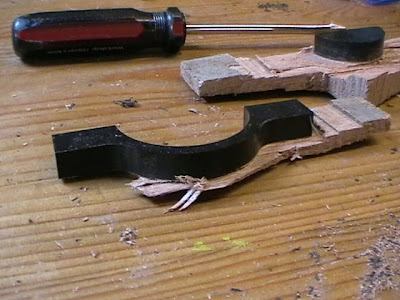 To get this far, I have written 14 NC files. They are:
To get this far, I have written 14 NC files. They are:001 6mm one quarter face milling
002 6mm counterbores
003 6mm big hole
004 3mm small holes
101 6mm wood area
102 6mm rectangle hole
102b 6mm wood area with island
103 6mm outside profile
104 3mm holes
201 6mm wood area
202 6mm right holes
203 6mm top right profile
204 6mm bottom right profile
205 6mm sub table
No super glue was used. I used double sided carpet tape for the facing operations.
I am using an adjustable spanner each time I change tool, because I don't have a 15mm spanner.
I don't have any safety spectacles.
Today I ordered both these things online as a reward for my hard work.






































